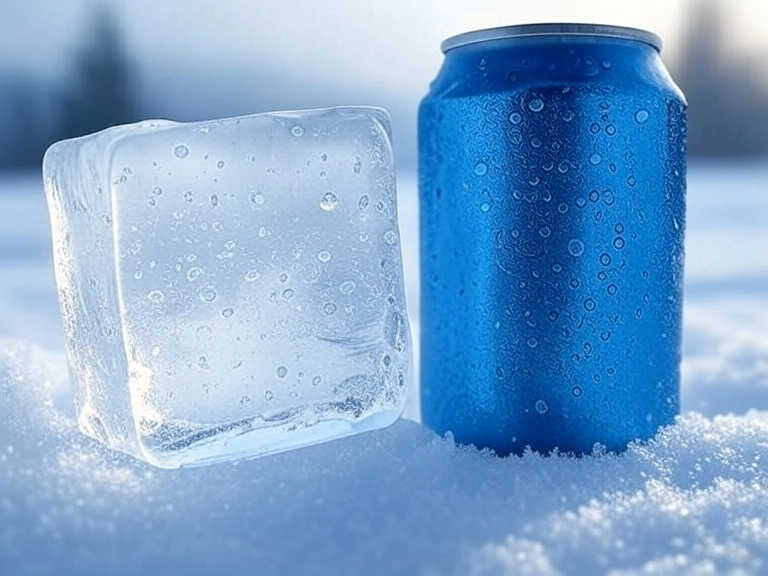We use close-ended questions every day, often without even thinking about it. From asking a coworker, “Are you done with that file?” to checking in with a friend, “Did you get home okay?”, these types of questions help us get quick, clear answers. They’re direct. They’re simple. And they work.
In communication, especially when time matters or when structure is important, close-ended questions are one of the most effective tools. They make surveys easier to fill out, interviews easier to manage, and conversations more efficient.
This article shows you 100 of the best examples of close-ended questions. These examples are practical, easy to understand, and taken from real situations. Whether you’re writing questions for a form, preparing for a job interview, or just curious about how to ask better questions, you’ll find useful insights here.
What Is a Close-Ended Question?
A close-ended question is a type of question that can only be answered with a limited set of responses, such as “yes” or “no,” or by choosing from multiple fixed options (e.g., “A, B, or C”). Unlike open-ended questions, which encourage longer and more detailed answers, close-ended questions are designed to collect specific, concise, and measurable information.
These questions are widely used in surveys, interviews, forms, customer feedback, and everyday conversations because they make it easier to analyze responses, compare answers, and stay focused on the topic.
Example:
Close-Ended: Do you like coffee?
(Possible answers: Yes / No)
100 Best Close-Ended Question Examples
1. Do you like pizza?
Simple yes or no question. No room for detail or explanation.
2. Have you ever been to Spain?
The answer is either yes or no. It doesn’t ask for a story.
3. Is your phone fully charged?
A quick check-in. Only needs a short response.
4. Are you coming to the meeting?
Clear and to the point. Not asking why or when.
5. Did you finish your homework?
Focuses only on whether the task is done or not.
6. Can you drive a car?
A skill-based yes or no question.
7. Is the weather nice today?
A closed response, usually yes or no.
8. Have you read this book?
Not asking for your opinion—just if you’ve read it.
9. Do you speak English?
Checks for ability, not fluency or interest.
10. Is it raining outside?
A factual, close-ended question. No room for elaboration.
11. Have you eaten breakfast?
The answer is clear-cut.
12. Do you drink coffee every day?
Only looking for a frequency-based yes or no.
13. Is your name John?
A confirmation question, short and direct.
14. Do you like working remotely?
Doesn’t ask for reasons or preferences—just a yes/no.
15. Are you free tomorrow?
A quick check, often used when planning.
16. Do you want sugar in your tea?
A basic binary choice.
17. Can I borrow your charger?
It’s either allowed or not—nothing in between.
18. Do you remember her name?
Tests memory with a yes or no.
19. Have you seen that movie?
No need to describe the plot—just yes or no.
20. Is this your first time here?
Checks for previous experience only.
21. Do you need help?
Straightforward, often asked by customer service staff.
22. Are you a student?
Identifies your status with a yes or no.
23. Did you enjoy the meal?
Despite sounding emotional, it still asks for a yes or no.
24. Have you met our manager?
Seeks confirmation, not a description.
25. Do you prefer tea over coffee?
Though it involves a preference, it still limits your answer.
26. Can we start now?
Looks for permission in a closed way.
27. Is this your handwriting?
Only about ownership, not style or neatness.
28. Do you like horror movies?
Only asking for a thumbs up or down.
29. Have you traveled abroad?
Doesn’t ask where—just if it happened.
30. Do you have any siblings?
Family-related but strictly yes/no.
31. Is your computer working?
Functionality check—simple and short.
32. Did you call your mom today?
Time-specific but still close-ended.
33. Are you allergic to nuts?
Medical question needing a quick answer.
34. Is this seat taken?
Common in public settings—only yes or no.
35. Do you know the answer?
Tests for knowledge presence, not depth.
36. Have you paid the bill?
Transactional, with no extra info needed.
37. Is she your sister?
A relationship confirmation question.
38. Did the package arrive?
Delivery-related question—very common.
39. Do you want to go out tonight?
A plan proposal in yes/no format.
40. Is it cold outside?
Checks weather conditions quickly.
41. Can you hear me?
Often asked during calls—needs a yes.
42. Do you have a valid ID?
Frequently used in verification.
43. Have you ever been in a taxi?
Checks for a past experience in a closed way.
44. Is your account active?
A system-status question.
45. Are you happy with the service?
Though subjective, it asks for a binary response.
46. Do you use social media?
Usage check, not opinion.
47. Did you take your medicine?
Health reminder question.
48. Is your appointment today?
Focuses only on date confirmation.
49. Have you joined the class?
Only seeks yes/no, not motivation.
50. Do you cook at home?
Doesn’t ask how or what—just if.
51. Is this your final decision?
Clarifies intention with a binary reply.
52. Have you seen my keys?
Looking for knowledge, not guesses.
53. Do you like spicy food?
Taste preference, closed format.
54. Is your car red?
Color confirmation—nothing more.
55. Can I ask a question?
Permission-based but still closed.
56. Are the kids asleep?
Just a status check.
57. Is the meeting at 3 PM?
Time-based, not asking for agenda.
58. Did she reply to your message?
Looks for outcome, not conversation detail.
59. Do you agree with this rule?
A basic yes/no on agreement.
60. Is your phone on silent?
Behavioral setting check.
61. Do you like dogs?
Pet preference, closed structure.
62. Have you logged out?
Security-based question.
63. Are you still there?
Often asked in online chats or calls.
64. Can you swim?
Skill question, nothing open-ended.
65. Is it your birthday today?
Simple fact check.
66. Do you like your job?
Job satisfaction, but short-form.
67. Is she older than you?
Age comparison with a binary answer.
68. Did it snow yesterday?
Time-specific weather fact.
69. Have you signed the form?
Looks for action completion.
70. Is this correct?
Confirmation on accuracy.
71. Are you online now?
Digital presence check.
72. Do you watch sports?
Interest-based, closed reply.
73. Did the phone ring?
Event check.
74. Is your number still the same?
Contact info confirmation.
75. Have you cleaned the kitchen?
Chore-related check.
76. Do you live nearby?
Checks proximity without needing directions.
77. Can I park here?
Quick permission request.
78. Are the lights off?
Status of objects—classic example.
79. Is the store open?
Operational status question.
80. Have you been to this café before?
Only needs a yes or no.
81. Do you need a bag?
Common at checkouts.
82. Is this your first job?
Experience-related, closed.
83. Did you see the email?
Looks for confirmation of receipt.
84. Are you in a hurry?
Time-sensitivity check.
85. Can you meet at 5 PM?
Scheduling with yes/no option.
86. Do you play an instrument?
Interest or hobby check.
87. Have you checked the time?
Short, purposeful question.
88. Is there a problem?
Very brief and often used.
89. Are you ready?
Quick readiness check.
90. Did you hear the news?
Information awareness test.
91. Do you remember the date?
Tests recall with yes/no.
92. Can we talk later?
Request framed in a close-ended format.
93. Do you need directions?
Help offer in closed style.
94. Is this your final answer?
Common in games or decisions.
95. Did you sleep well?
Polite small talk, still closed.
96. Are you on vacation?
Status check question.
97. Do you like working in teams?
Work preference, not requiring details.
98. Have you updated the file?
Work-related task confirmation.
99. Do you own a pet?
Again, this doesn’t ask what kind of pet, just if one exists.
100. Do you want to continue?
Checks intention to proceed.
Read also: 100 Open-Ended Questions: Examples & Meaning
Why Use Close-Ended Questions?
Close-ended questions are valuable for many reasons. Here are some of the main benefits:
-
Clarity: They help you get direct and simple answers.
-
Speed: They save time in both asking and answering.
-
Easy to Analyze: In surveys or interviews, responses are easier to measure and compare.
-
Control: They help keep conversations focused.
-
Structure: Great for situations where open-ended answers would be too vague or time-consuming.
Whether you’re a teacher, manager, or just someone trying to make better conversations, close-ended questions are a practical tool.
When Should You Use Close-Ended Questions?
Close-ended questions are not perfect for every situation. Here’s when they work best – and when they don’t:
Use Them When:
-
You want a quick decision.
-
You’re gathering data (like in forms or polls).
-
You want to confirm facts.
-
You’re narrowing down options.
Avoid Them When:
-
You want detailed opinions.
-
You’re trying to build a relationship or trust.
-
The topic is emotional or sensitive.
-
You want creativity or brainstorming.
Knowing when to use close-ended vs. open-ended questions will help you communicate more effectively.
Are Close-Ended Questions Good or Bad?
Some people say close-ended questions are too limited. Others rely on them every day. So, which is it? Are close-ended questions good—or not?
The answer depends on what you need.
If you’re looking for facts, decisions, or quick input, close-ended questions are incredibly useful. They’re clear. They get straight to the point. There’s no confusion about what kind of answer you’re asking for.
Think about a time you were in a rush and someone asked, “Are you free right now?” That’s a close-ended question. You either were or you weren’t. Simple. It saved time for both of you.
Now compare that to someone asking, “How’s your day going?” That’s open-ended. Sometimes it works. But not always. Especially when you’re just trying to get a yes or no.
In surveys, job interviews, customer service chats, and even texting your partner—close-ended questions have a place. They create structure. They reduce guesswork. And they help you move forward without getting stuck in long explanations.
But there’s a limit. If you only ask close-ended questions, conversations can feel robotic. Cold, even. People might feel like you’re just ticking boxes, not really listening.
That’s why the smartest communicators know when to use both kinds. Close-ended when you want a decision. Open-ended when you want to understand.
There’s no one-size-fits-all approach. But if you’re aware of what kind of question you’re asking—and why—it makes a difference.
Close-ended questions aren’t good or bad. They’re just tools. What matters is how you use them.
Read also
The Most Popular on BitGlint

30 Nature Worship Examples & Meaning
Nature has always mattered to people. Long before modern religions, people looked to the sky, the land, and the...

50 Things That Are Smart
We all know someone who seems naturally clever. Maybe they pick up new skills quickly or always have the right answer....

30 Doubt Examples & Meaning
Everyone experiences doubt. It can show up in small everyday choices or big life decisions. Sometimes it’s a quiet...

40 Emotional Value Examples & Meaning
Why do some messages stick — while others are forgotten? Why do people choose one brand over another, even when the...

100 Temporary Things Examples & Meaning
What does it mean when something is temporary? We use the word often, but many people don’t stop to think about it. In...

100 Things That Are Short
Not everything in life is big or long-lasting. Some things are small. Some things pass quickly. People notice short...

100+ Things That Are Cold
Cold is something most people understand the moment they feel it. You step outside on a freezing morning. You grab a...
Get Inspired with BitGlint
The Latest
30 Examples of Gathering & What It Means
The word gathering shows up in everyday life more than we think. People gather at dinner tables, sports games, places of worship, and even in traffic. We gather items, thoughts, ideas, and people. It’s a word that covers both the ordinary and the meaningful. But what...

100 Non-Digital Things List
In everyday life, there are still hundreds of objects, tools, and materials that exist completely outside the digital world. These things don’t rely on apps, batteries, software, or code. They work the way they always have — by touch, by movement, by presence. Some...
100+ Legends Examples, Types, and Meanings
Legends have fascinated people for centuries. These traditional stories mix real history with imagination. From ancient warriors and lost cities to mysterious creatures, legends are found in every culture around the world. This article will take you through over 100...
30 Oligarchy Examples & Definition
Have you ever felt like a small group of people secretly runs everything—whether in politics, business, or even everyday life? You’re not alone. Throughout history, power has often ended up in the hands of a few, shaping governments, economies, and societies in ways...

